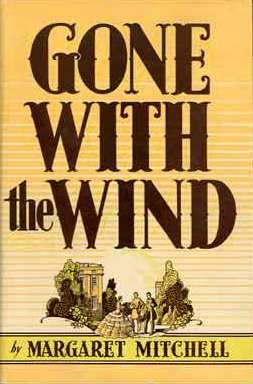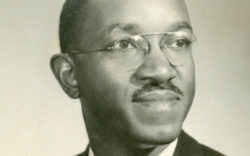
The excitement and acclaim that greeted both the Peachtree and the Broadway premieres of producer David O. Selznick’s adaptation of Gone With the Wind just before Christmas 75 years ago seems genuinely cringe-worthy today, after multiple indictments over recent years of Margaret Mitchell’s novel as racist and historically distorted. Mitchell is clearly culpable on the first count, although by no means uniquely so, but latter-day critics who charge her with distorting history would be well advised to consider the history she had to work with and, in some aspects, even undertook to revise.
Released in mid-summer 1936, Mitchell’s book had already sold more than a million copies in the U.S. alone by January, 1937. Rather than disappoint a multitude of adoring readers poring obsessively over their favorite lines, the screenwriters ultimately opted for scrupulous fidelity to Mitchell’s text. Yet the film’s opening credits, introducing it as “Margaret Mitchell’s Story of the Old South,” were more applicable to its dialogue than to some of the actual meanings Mitchell meant to convey. This much was clear to Mitchell and her more thoughtful readers—even before the first scene—in the scrolled lines setting the story in “a land of Cavaliers and cotton” where “the Age of Chivalry took its last bow.” Mitchell took great exception to this spin on her story that, she consistently maintained, was actually intended to insert some historical realism in an Old South narrative long shrouded in fluttery romanticism. “I certainly had no intention of writing about Cavaliers,” she insisted, pointing out that “practically all my characters, except the Virginia Wilkeses, were of sturdy yeoman stock.”
Mitchell’s words certainly rang true in her depiction of prominent planter Gerald O’Hara as a semi-literate “bogtrotter” who fled his native Ireland under suspicion for the murder of an English rent collector. “Loud-mouthed and blustering,” Mitchell’s Gerald proceeds to parlay his facility at poker and his “steady head for whiskey” into ownership of a run-down plantation, and after marrying well above his own social station, he ultimately satisfies his “ruthless longing” for a respected place in planter society.
In the film, by contrast, the means of Gerald’s socioeconomic ascent are never addressed, much less the more questionable aspects of his Irish background. Mitchell had also presented Tara as a “clumsy, sprawling” structure with a simple whitewashed brick exterior. The filmmakers, however, remained deaf to her several pleas for an “ugly, sprawling and columnless” O’Hara residence in keeping with typical plantation houses in a Georgia upcountry still not long removed from the frontier. Despite Mitchell’s attempts to revise key aspects of both popular and scholarly myth, producer Selznick made it clear that he had no intention of poking holes in what remained a delightfully marketable plantation legend. Thus, Mitchell was left to conclude that she and a tiny cadre of Southern historical realists might “write the truth about the antebellum South… until Gabriel blows his trump, and everyone would go on believing the Hollywood version.”
In truth, the film did a little better in capturing Mitchell’s disdain for the legend of the white South’s heroic “Redemption” from Reconstruction by a resurgent planter aristocracy. After the war, her high-minded, genteel families like the Wilkeses flounder and fail, especially Ashley, who seemed wonderfully grand in the Old South but proves woefully inept in the New. Scarlett, meanwhile, summons the grit and gall that is her patrimony from the low-born Gerald, rising above her despair in the garden at Twelve Oaks and heading off to a rebuilding Atlanta, where there was “still plenty of money to be made by anyone who isn’t afraid to work—or to grab.”
Scarlett quickly proves that she is hesitant to do neither. Her “harsh contact with the red earth of Tara” has transformed her into a thoroughgoing economic realist who grimly concedes that the Yankees were right about at least one thing: “It took money to be a lady.” Ironically, her only means of feeling like a lady again was to “make money for herself, as men made money.”
Suffice it to say, Mitchell’s black characters reveal no such complexity or depth but remain steadfastly and stereotypically one-dimensional. Hence, the widespread perception today of her novel as nothing more than what one critic called “a racist, revisionist Southern apologetic” written by a wealthy white Atlanta debutante still embittered about the outcome of the Civil War. This facile exercise in regional stereotyping is unfortunate, to say the least, especially given the current anger and division nationwide over what appears to be a pattern of undifferentiated racial profiling by law enforcement, the courts, and let’s face it, a lot of white citizens as well. Accordingly, Americans would do well to reconsider such conveniently narrow sectional pigeonholing of a book that was actually quite compatible with white racial attitudes, both popular and scholarly, prevailing nationally at the end of the 1930s and well beyond. Such a reconsideration might even mean that the next time an Eric Garner is killed by police outside the South, we could at least be spared the long-since predictable, almost willfully naive reaction registered by a recent “Justice for All” protester who exclaimed: “This isn’t the Deep South. This isn’t Mississippi in the 1960s. This is New York City in 2014.”
Novelist Pat Conroy has suggested that, for still-angry and defiant white southerners, Gone With the Wind amounted to “a clenched fist raised to the North.” This is doubtless correct, but there is little evidence that many white northerners interpreted it this way at the time. Nor was there much indication that Mitchell’s racist language and depictions were particularly offensive to whites outside the South in an early 1939 Gallup survey suggesting that some 14 million Americans had read her book in its first 30 months in print and positing a likely national audience of some 56.5 million viewers for the eagerly anticipated film based on it.
If neither Mitchell nor the great balance of her national readership appeared to give much thought to the disturbing racial realities behind the seductive Southern legend, the same could just as easily be said of a great many white academic historians, North and South. Mitchell was thoroughly conversant with the relevant (white) scholarship at her disposal, and her airbrushed portrait of slavery and casual indulgence in racial stereotypes are hardly at odds with perceptions offered by two distinguished Ivy League historians in the most widely used collegiate U.S. history textbook of the day. “Sambo,” they assured students, did not fare badly in bondage, because, despite the horror stories served up by the uptight abolitionists, “the majority of the slaves were adequately fed, well cared for, and apparently happy.”
Likewise, Scarlett’s charge that emancipation “just ruined the darkies” fairly echoed the sentiments of Columbia University’s profoundly influential historian of Reconstruction, William A. Dunning, who insisted that “the freedmen… could not for generations be on the same social, moral and intellectual plane with the whites.” The sole aim of Dunning and his many students and disciples, charged W. E. B. Dubois, was “to prove that the South was right in Reconstruction, the North vengeful or deceived and the Negro stupid.”
Such biased and offensive treatments had already passed for scholarship far too long when they finally came under concentrated assault by black activists and educators during World War II. The blatant hypocrisy of a Jim Crow army fighting in defense of freedom and democracy abroad, as well as the greater economic and political empowerment that the war engendered, had borne fruit in a more insistent, unremitting resolve. African Americans must at last be granted the full measure of both their rights as citizens and the dignity and respect those rights conferred. Still, although white and black scholars alike would soon be undertaking dramatic revisions of historical interpretations of slavery as well as Reconstruction, not until the 1960s would either the now-notorious “Sambo” passage be excised from the still-popular textbook or the racist and inaccurate Dunningite portrayal of Reconstruction meet with full-blown refutation.
Although Gone With The Wind consistently ranks second only to The Holy Bible as Americans’ favorite book, a new Economist poll shows that only 20 percent of Americans have actually read it, while less than 30 percent of those under 30 have even seen the movie. These figures might strike some as positive rather than negative indicators, but there is a real sense in which all Americans—regardless of age, race, or region—would benefit from reading Mitchell’s book for what it is, not simply as a white Southerner’s distorted defense of her region’s uniquely horrific racial past, but as a strikingly clear window into a national past whose burdens confront them even today. Although it may fall short of being a great one, Gone With The Wind is—and always was—a thoroughly American novel.
P.S. This bloviation is a streamlined version of a piece posted over at likethedew.com.
P.P.S. The ol’ Bloviator knows “Cobbloviate Heads” near and far will not feel as though Christmas is really here until they receive the traditional greetings of the season, courtesy of his faithful ol’ pickup, which is still flashing away after 20 years and 100k+ miles. Merry Christmas to you all, and, as always, to the Techsters, who may still be celebrating their-once-in-a-blue moon victory with a “Blue Moon” (ugh!) or several about now, “Felice Bobby Dodd!”
Like what you just read? Support Flagpole by making a donation today. Every dollar you give helps fund our ongoing mission to provide Athens with quality, independent journalism.










